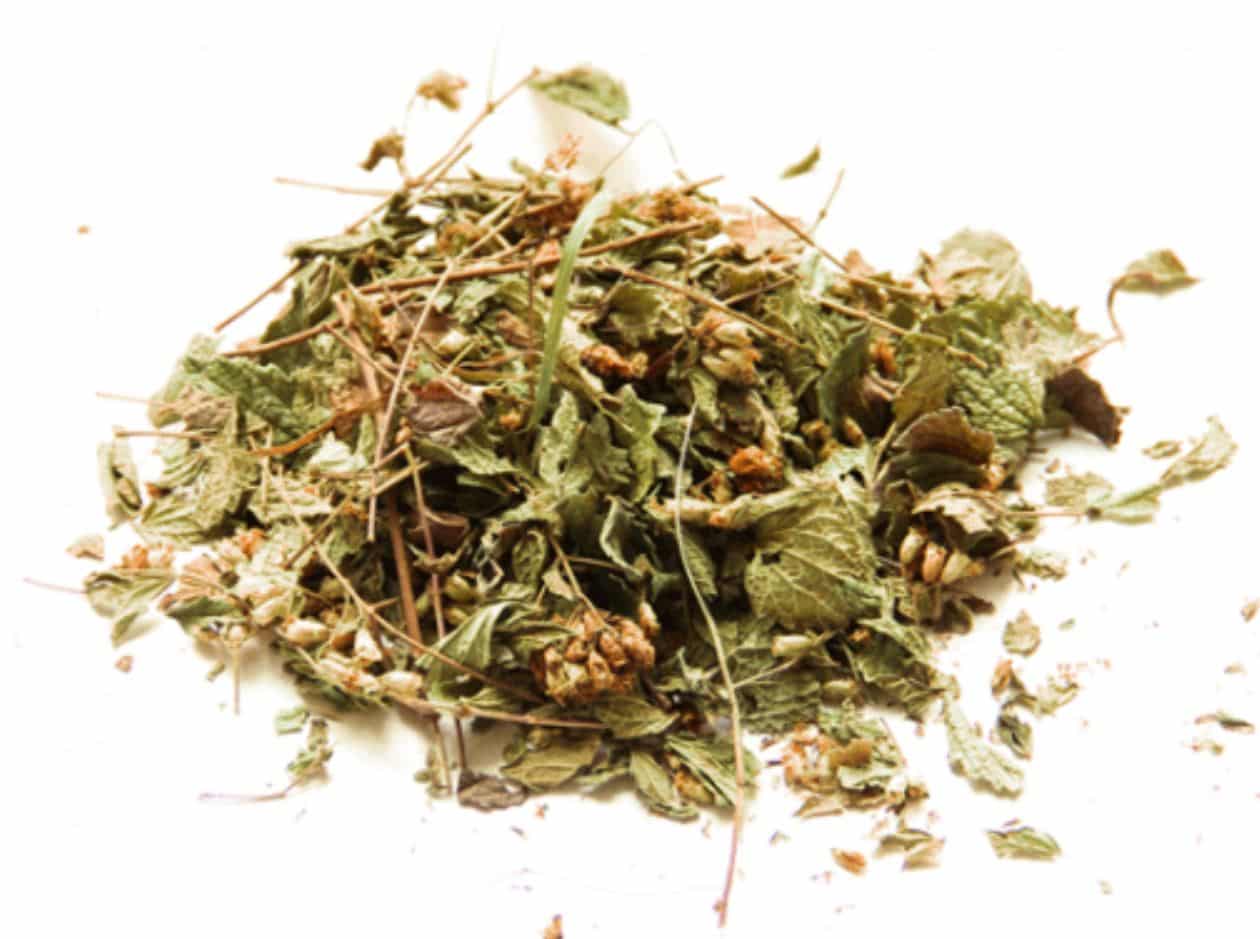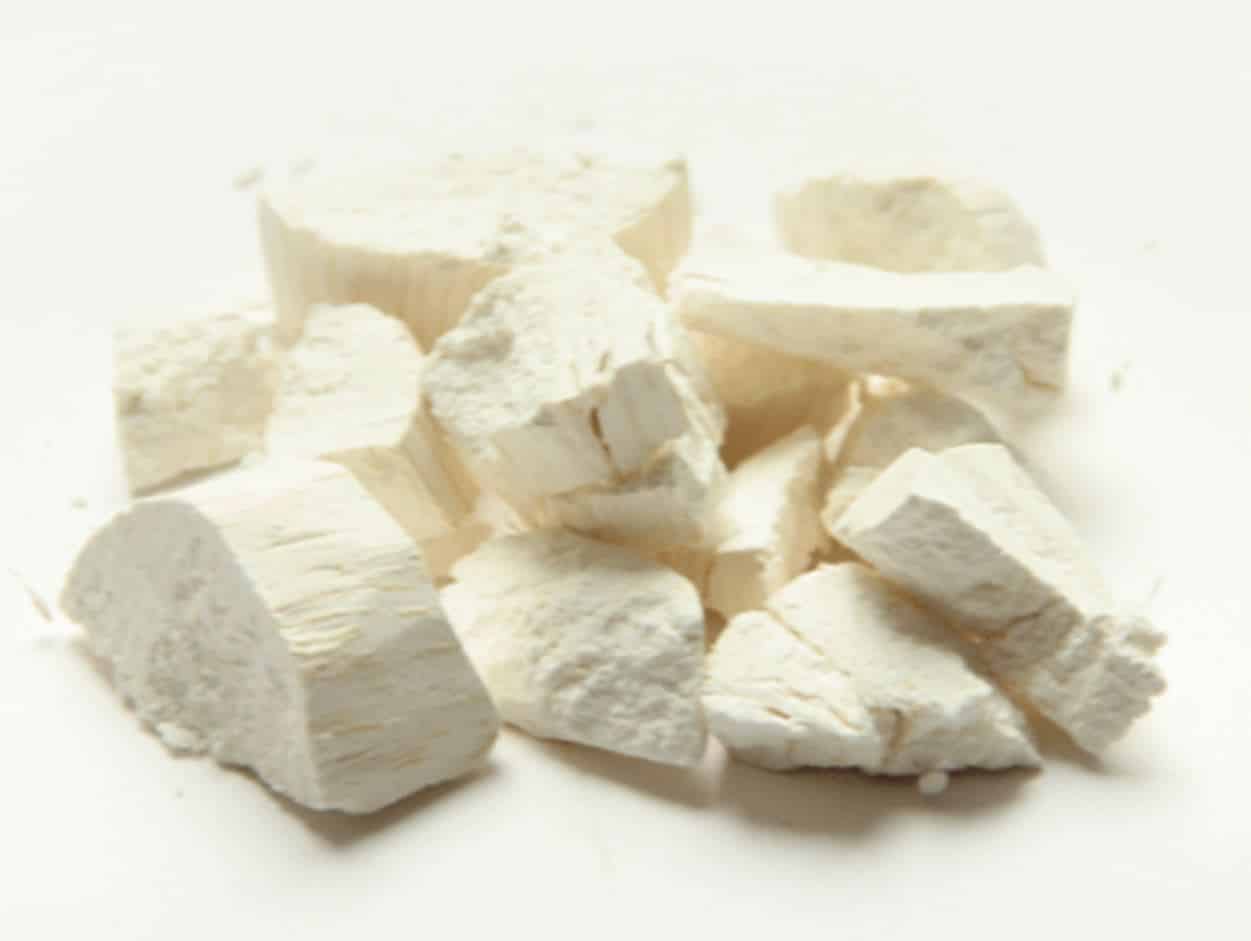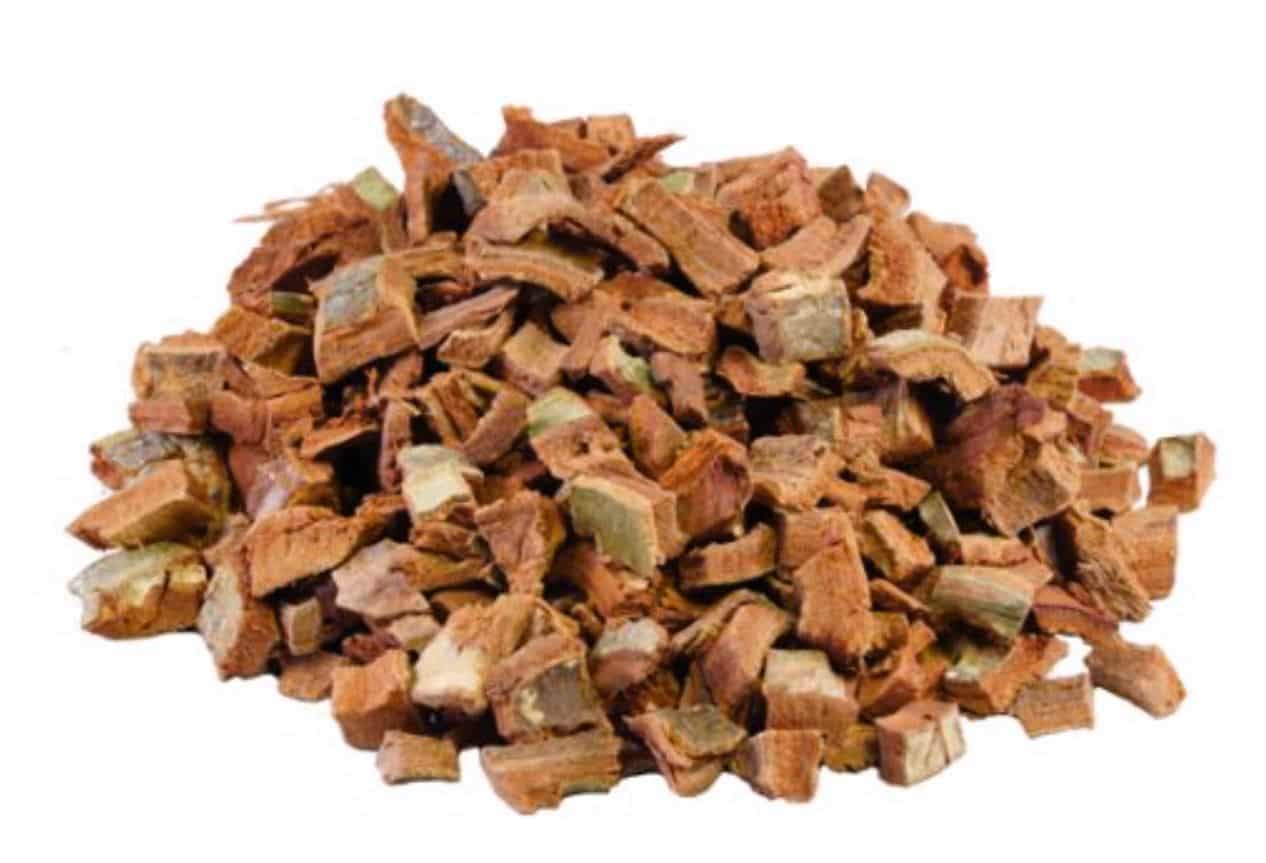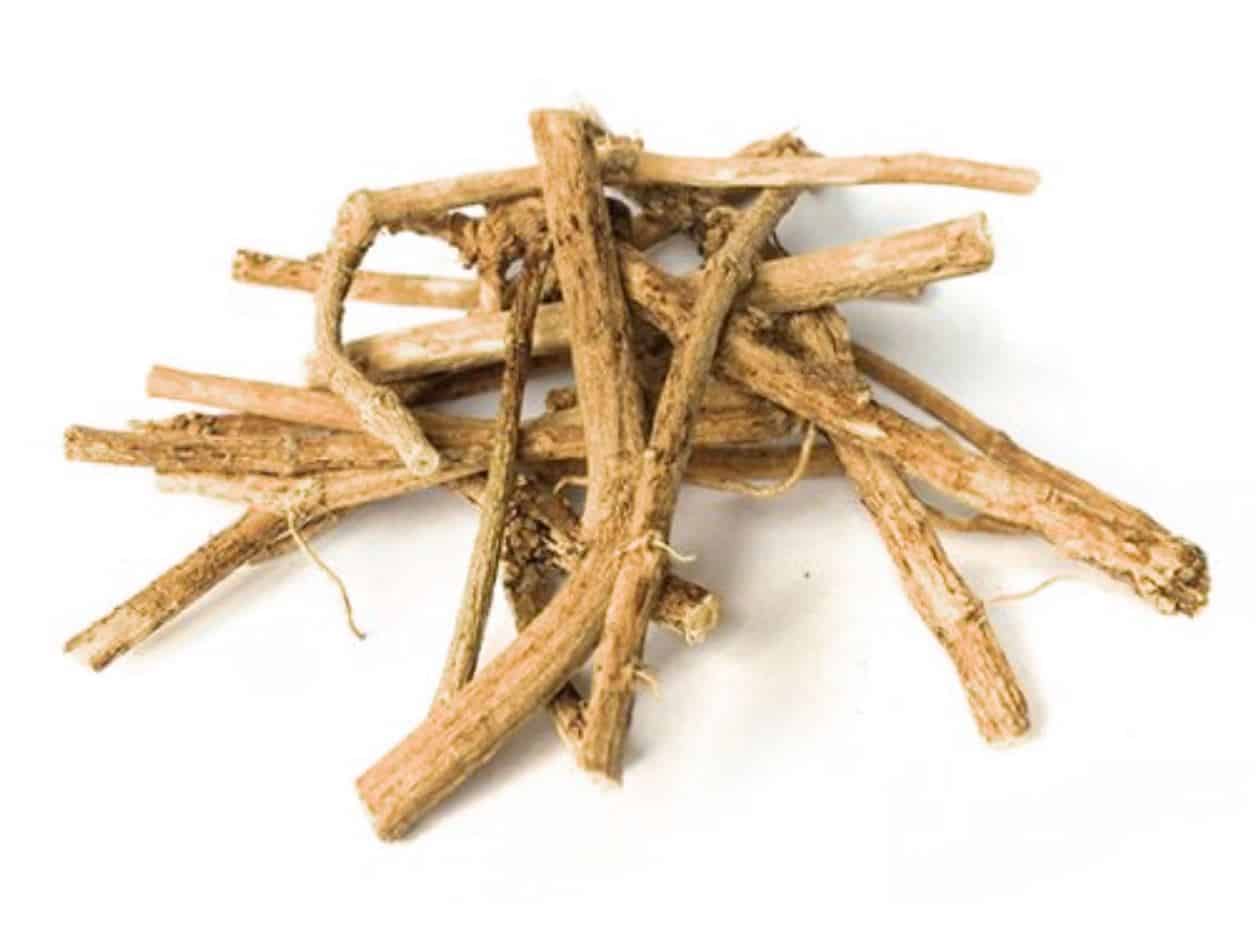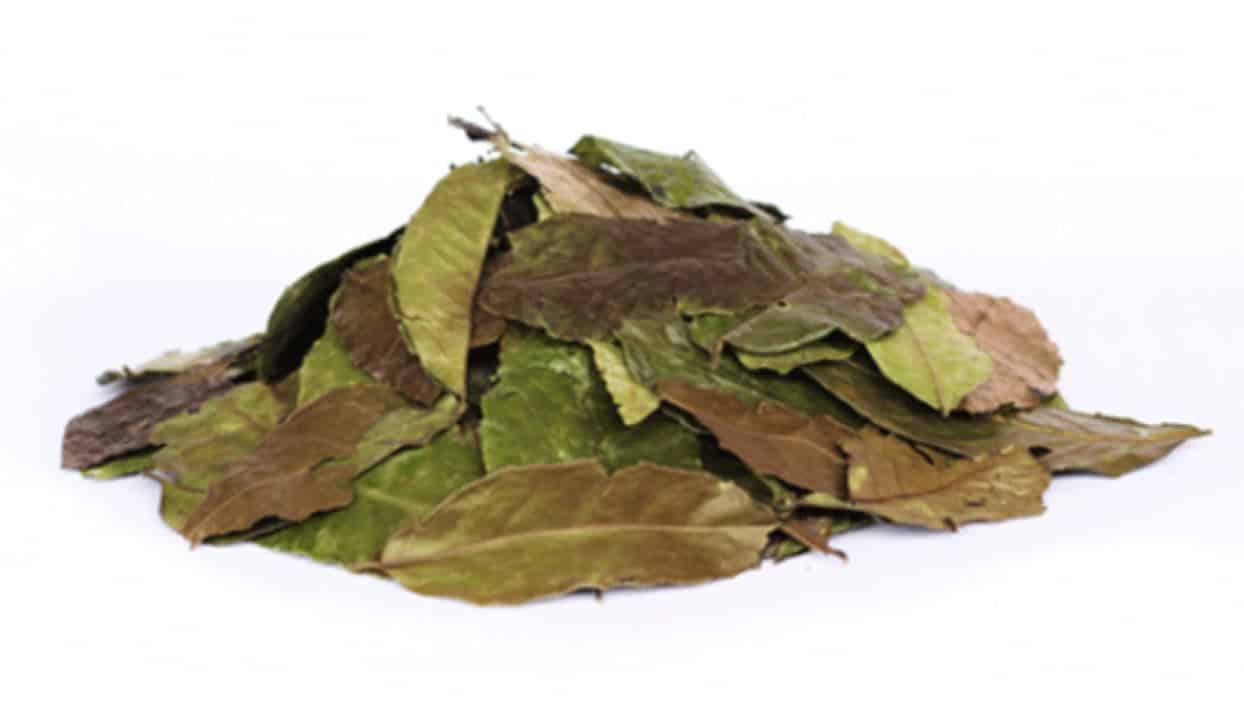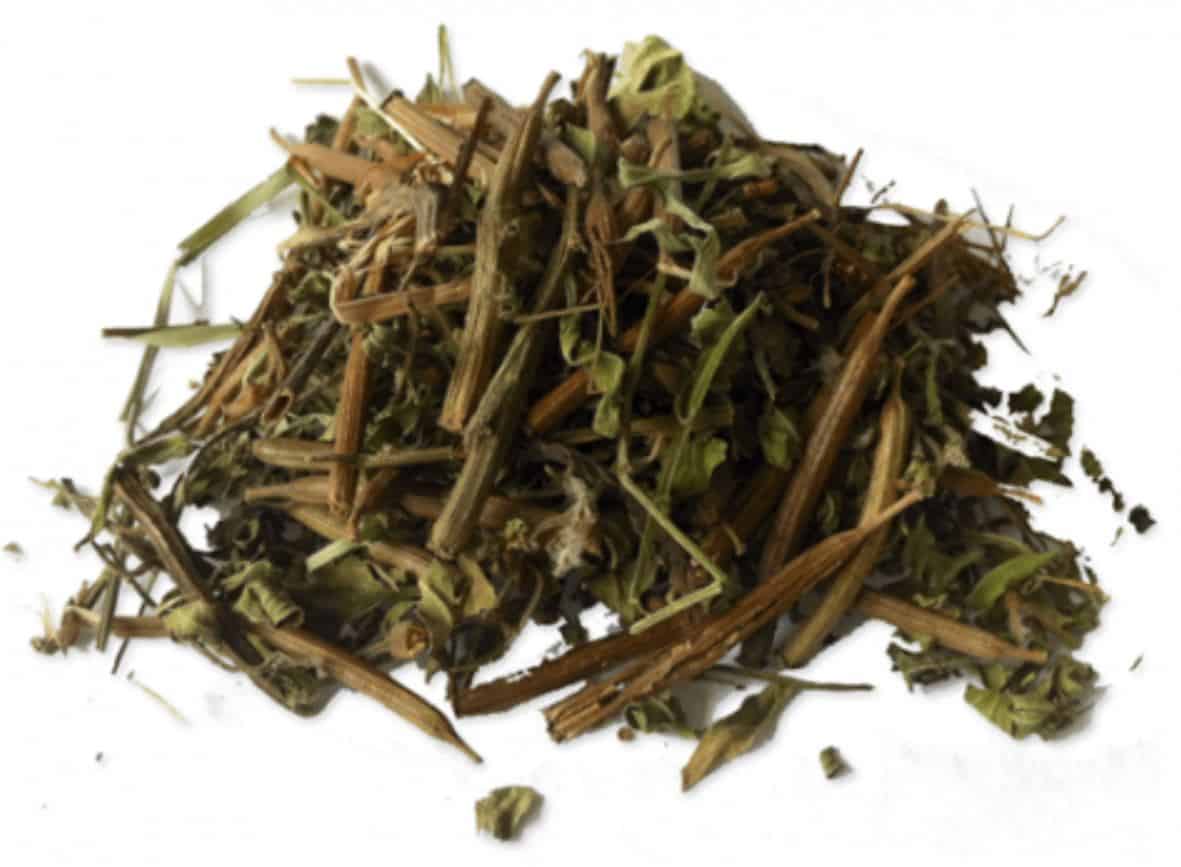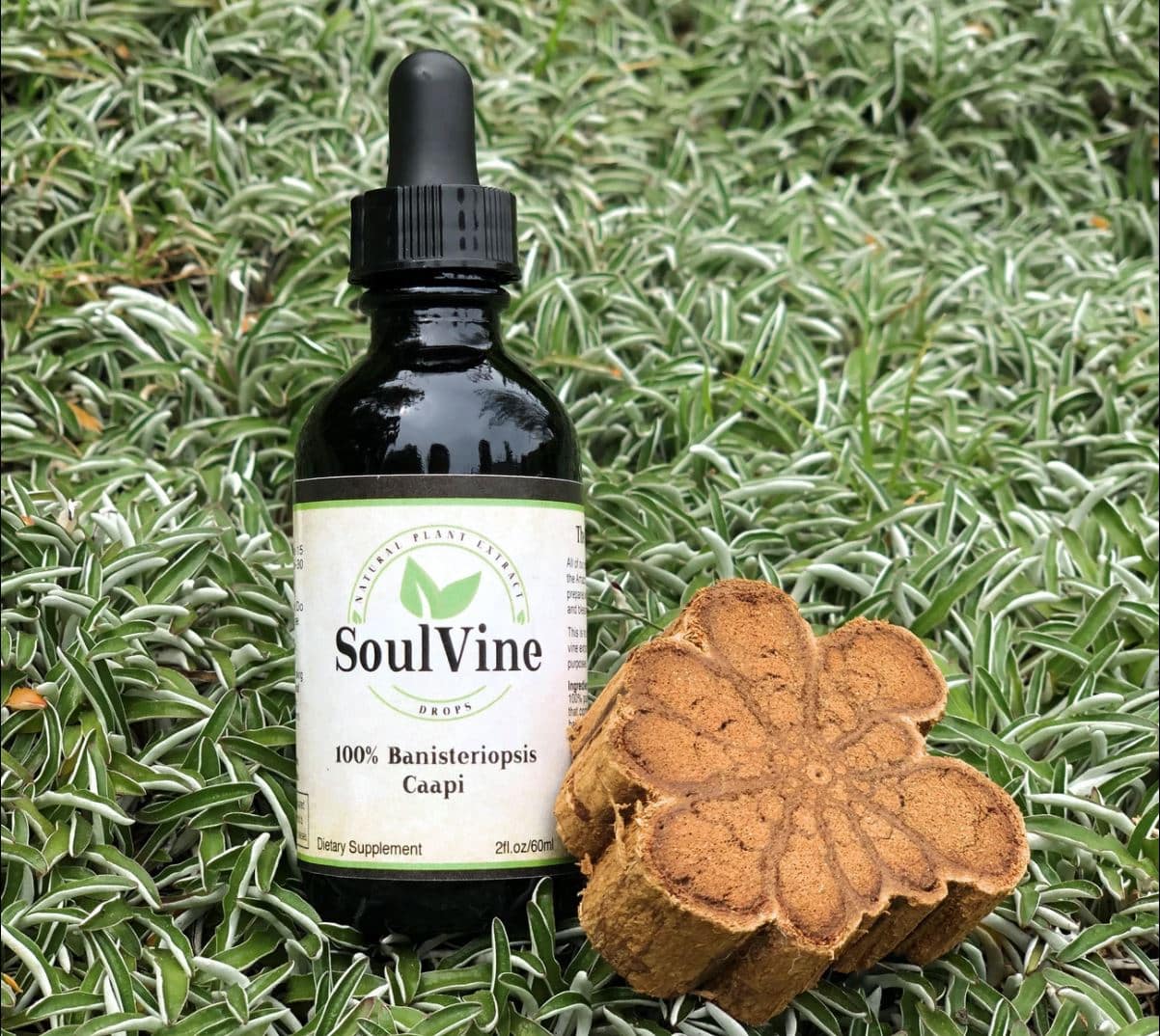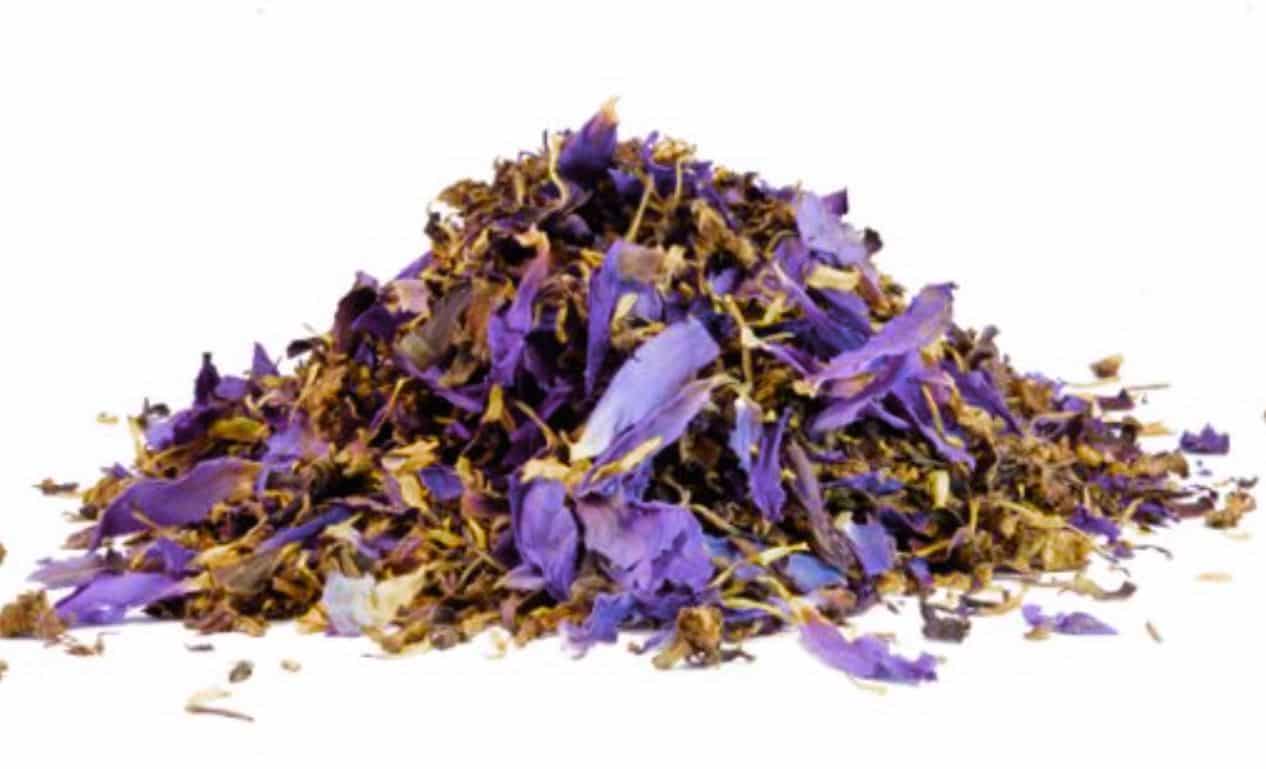Dream Herbs: Top 10 Exotic & Legal Oneirogens
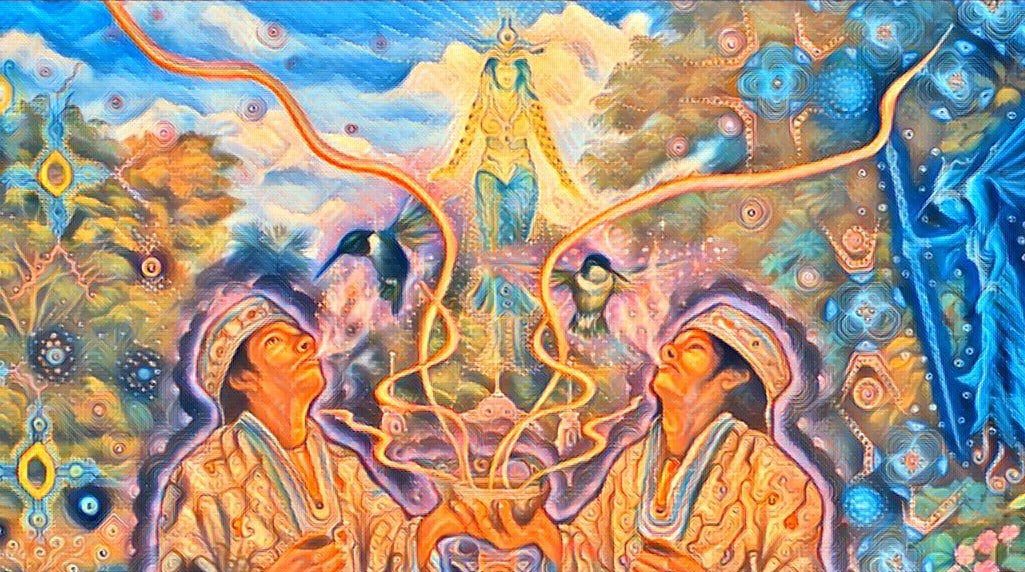
While much has changed throughout human history, certain aspects of our species’ existence remain constant. As different as we are from our distant ancestors, these common strands create a strong bond between us – not only through time and space, but also in intention and need.
The most basic strands are biological imperatives – naturally, we all need to eat, hydrate, excrete, sleep, and perform other functions dictated by our physiology. These needs serve our personal survival and, more importantly, the procreation of our species as a collective.
With these appeased, higher-order strands emerge; and one of the particularly interesting ones strings together the narrative of our eternal, innate pursuit of the numinous. This ever-present instinct drives us to expand our understanding of the nature of life, consciousness, the universe, and realms beyond.
At the intersection of the biological and the numinous strands lies the very unique landscape of the dreamworld.
The Dream Connection
Exploring and harnessing the powers of dreams is an ancient practice. Hindu manuscripts from 2,000 years ago suggest that they were aware of lucid dreaming and categorized it as its own state of consciousness. Ancient Buddhist monks of Tibet practiced “Dream Yoga,” a meditation technique that teaches dreamers to recognize and control their dreams.
Records from Egypt and Greece also describe how these two ancient cultures would explore the prophetic potential of dreams in ritual sites called “sleep temples.”
Dreams are the result of our brainwaves shifting to slower frequencies – theta and delta – once our ‘default’ consciousness shuts down to allow our bodies to rest. These changes catalyze the departure of the intangible, indescribable spiritual component of our being for a bizarre journey through seemingly random scenarios that often draw on our personalities and experiences.
Despite decades of research, we are not much closer to deciphering what exactly happens during dreams; this is one of the mysteries of life that may remain well out of reach to science for quite some time to come.
However, what we do know is that features of deamstates overlap with other altered states of consciousness, particularly those we enter when we consume psychedelic substances; basically, this means that these substances can put us in dreamlike states.
Tools such as theta brainwave audio meditations can also induce dreamlike, healing frequencies resembling those experienced in shamanic states of consciousness. Check out our Native Power Brainwave Meditations here for more information!
Dream Herbs: Unlocking the Potential of Óneiros
Psychedelics appear to open up portals to our subconscious and endless arrays of infinite, multidimensional other realms, straight from a sober, waking state. As a complement, certain other substances can catalyze more subtle, yet still powerful effects on our dream journeys.
These substances are called oneirogens, and they have an ancient history of use in the ancient practice of oneiromancy. The word oneirogen comes from the Greek words óneiros, meaning “dream,” and gen, meaning to “create” or “produce.”
Oneirogens are mostly plants – these fantastic flora specimens have grown and been consumed since thousands of years ago in every part of the world by a variety of cultures. The purpose oneirogens served was enhancing the vividness, prophetic quality, and control over dreams, as well as establishing connections with ancestors and divinity.
The use of these plants is not just a remnant of ancient times, though – they are still very much employed by a global community of sleep enthusiasts, including lucid dreamers, astral projectionists, and those simply wishing to improve their sleep or enhance their dreamscapes.
Below are some of the most well-known, tried and true dream herbs that can be integrated into a plant medicine practice for making the best of the approximately third of our life we spend sleeping:
1. Mexican Dream Herb | Calea zacatechichi
Calea zacatechichi, or Calea ternifolia, colloquially referred to as the Mexican Dream Herb or bitter-grass, is a flowering shrub from the family Asteraceae. It’s native to Central America, and is found growing in abundance in Oaxaca, Mexico.
This herb has been used for thousands of years in traditional folk medicine as an appetite stimulant, cleansing agent, calming agent, laxative, and for treatment of diarrhea, dysentery, fever, skin rashes, swollen scalps, ‘cold stomach,’ and headache.
Aside from its medicinal applications, C. zacatechichi use also has a ritual component – anecdotal reports describe use by the Chontal people of Oaxaca and rituals in which the plant is smoked, drunk as a tea, applied topically, or placed under a pillow to induce divinatory or lucid dreams.
Its use in the Global North is mostly as an oneirogen – a study revealed that the Mexican Dream Herb increased the number of overall dreams in participants, extended the superficial stages of sleep and the number of spontaneous awakenings, improved the ability to recall dreams, and enhanced the intensity of hypnagogic imagery experienced while falling asleep. It’s assumed that its active compounds caleochromanes and caleicines are responsible for these effects.
Because of its intensely bitter taste, many prefer to either smoke the dry flowers and stems of the plant or to pulverise it and consume it in capsules; at least 5g is needed if taken orally. Apparently, brewing it with Osmanthus flowers helps attenuate the bitterness.
2. Uvuma-omhlope | Synaptolepis kirkii
Known by its traditional name Uvuma-omhlope, Synaptolepis kirkii is a shrub with delicious fruit and thick, fibrous roots. It grows throughout Africa, particularly in the southern part of the continent, and it has a long history of medicinal and ritual use.
In Zulu and Xhosa traditions, Uvuma-omhlope’s roots are combined with many other herbs to produce a potion called ubulawu, which is drunk to induce dreams, shift the drinker into a trance state, or help them eliminate bodily toxins and negative energies. It is said to help those who drink it communicate with their ancestors, to lead them into visionary and prophetic dreams, and to aid in divination and in gaining answers to specific questions.
Aside from strongly enhancing the vividness of dreams and the potential to experience lucid dreams, there are also reports of improved sleep, relief in anxiety, and feelings of well-being and happiness from those who work with this plant.
The easiest way to consume Uvuma-omhlope is to brew it into tea and drink it before sleep. A typical dosage is 300mg, but some may need higher doses of up to 500mg. The root is most often bought in chunks or ground into a powder.
Uvuma-omhlope contains several not-well-understood alkaloids. Among them is the somewhat better-studied kirkinine, a potent neurotrophic which is thought to support the growth, survival, repair, and differentiation of both developing and mature neurons.
3. Fever Tree | Acacia xanthophloea
Vachellia xanthophloea or Acacia xanthophloea is also known as the fever tree. The story behind this colloquial name boasts a note of irony: as the tree grows in swampy areas, which are perfect breeding grounds for mosquitos, malaria is common in populations that live nearby. Early European settlers believed that the tree in fact causes the fever in people, and were oblivious to the fact that its bark is actually used for treating the illness. The name, however, stuck.
A. xanthophloea can grow up to 25 meters tall and has an open, rounded to spreading or flattish crown which is sparsely foliated. Native to southeastern Africa, this strikingly beautiful tree is also planted in ornamental purposes in warm climates outside of its natural range.
In Kenyan traditional medicine, a decoction made from its bark is used to treat indigestion, while in Tanzania it is given as a treatment for sickle cell anaemia. The Zulu are known to use powdered bark as an emetic and prophylactic in malaria patients, and also in treatment of eyes.
Various African cultures recognize the bark of this tree for its dream-enhancing properties. For thousands of years, it’s been used by indigenous communities for divination purposes, especially in the preparation of the ubulawu brew, to which it’s added along with four other plants.
The visionary and prophetic dreams it’s said to induce supposedly provide the dreamers with answers to the question they bring along into the dream realm.
4. African Dream Root | Silene capensis
Silene capensis, the famous African Dream Root, is a flowering herb that grows in the Eastern Cape of South Africa. In the native Xhosa culture, it is considered a sacred plant. Its roots are traditionally used for inducing vivi, lucid, prophetic dreams in shamanic initiations.
The Xhosa believe that Silene capensis catalyzes ancestral communication. The root is referred to as Undela Ziimhlophe or “white path”, to symbolize the white color often appearing in dreams occasioned by this plant.
The root can be powdered and drunk with water or consumed as a foam. The simplest way is adding 1-2 grams of powder into a glass of water and drinking the mix before sleep. The more laborious way involves stirring or whisking the water with the powder in it vigorously until foam appears. The foam is eaten and the process repeated until the drinker feels full.
Traditionally, Silene capensis would be taken in the morning on an empty stomach, allowing the alkaloids to be absorbed into the body. A meal can be taken after an hour, and the dream effects appear at night. The alkaloids build up in the body, and several days of consecutive drinking can lead to enhanced effects. S. capensis is potent enough to be oneirogenic on its own, but for a more full effect it can be consumed within the ubulawu brew, which also contains four other dream herbs.
The root of S. capensis is rich in triterpenoid saponins, with over 50 individual compounds from this class having been identified in this plant. These compounds act as sleep aids as well as antivirals; they are also potent antioxidants and may help reduce cholesterol.
5. Guayusa | Ilex guayusa
Guayusa is among the most important herbs used in Amazonian plant medicine. It’s native to Ecuador, northeastern Peru, and southwestern Colombia, and it grows in rainforest environments at altitudes between 200 and 2000 meters.
The tea made from guayusa leaves is intensely stimulating and essential for local populations, as it provides drinkers with energy for work and sensory acuity needed for hunting. It is also drunk widely throughout Ecuador in social gatherings or any other context for its uplifting effects.
In more indigenous use, the Kichwa and Jívaro people of Ecuador and Peru use guayusa tea to promote digestion – large amounts are drunk in pre-dawn ceremonies and then purged to cleanse out the gastrointestinal tract but avoid absorption of too much caffeine. During these rituals, the dreams from the previous night are also interpreted, and divine guidance for the day’s hunt requested.
Drinking a strong guayusa tea before bedtime can reportedly induce lucidity and allow the drinker to experience a state in between dream and reality, during which the meaning of the previous dream is explained to them.
Aside from being such a versatile and potent plant, guayusa is also a nutritional powerhouse. It contains 15 essential amino acids, over 300 antioxidants, a variety of vitamins and minerals including vitamins C and D, calcium, potassium, and magnesium.
Its stimulating effects come from xanthine alkaloids such as caffeine, theobromine (also found in the cacao bean), theophylline, L-theanine (found in green tea), caretenoids, tannins, glucatamic acid, feluric acid, and chlorogenic acid. Unlike coffee, guayusa does not create a sudden caffeine buzz; in conjunction with theanine, the caffeine is released slowly leading to a more balanced energetic elevation and allowing the drinker to fall asleep without trouble.
Guayusa tea is prepared simply by boiling fresh or dried leaves in a pot of water. Extracts are also commonly available for purchase.
6. The Sun Opener | Hemia salicifolia
Also known as the “Mexican Marigold,” Heimia salicifolia is a flowering herb found throughout the Americas, with most growing in the southwestern part of the United States, and Central America – especially Mexico. It needs a tropical climate in order to thrive, but the plant’s also been successfully cultivated as north as California and as south as Argentina.
Due to its ability to catalyze trance states, the Aztecs considered it sacred. They referred to it as the “Sun Opener” due to the field of vision becoming imbued with a yellow hue while under its influence. In Aztec rituals, the plant was employed to connect the takers with the divine realm and allow them access to ancient events.
Heimia salicifolia has centuries of ceremonial use in Mexican shamanic practices; it is still a valuable medicinal and divinatory herb. Some indigenous Mexican cultures call the flower sinicuici, referring to its auditory hallucinogenic qualities.
The initial effects of this plant include muscular relaxation and a general heightened state of euphoria, as well as increased perspiration and auditory enhancement or mild hallucinations. Visual effects are also present, mainly color tinting of objects and the visual field, akin to seeing auras.
More profound psychological effects include a distorted perception of time, enhanced memory of the past, which can reportedly transcend the current life, and enhanced abilities of lucid dreaming and astral projection.
Dried leaves are sometimes smoked in cigarette form, while leaves as well as roots, flowers, stems, and seeds of this plant have been made into fermented teas, healing salves, and cleansing waters for baths.
A method traditionally used in Mexican shamanism involves adding wilted leaves into a glass vessel filled with cool water. This mixture would be placed in the sun and allowed to ferment for 24 hours. Indigenous belief has it that during this fermenting process, the energy and knowledge of the sun gets imbued into the potion, which is how it gets the name “Elixir of the Sun”.
A number of alkaloids have been isolated in H. salicifolia. Its main active constituent appears to be phenylalanine, which is structurally very similar to dopamine and adrenaline; this may be able to account for some of its active effects.
Not sure which plant to try out? Our partner Waking Herbs has the ideal sampler offer for you.
Order their Dream Herbs Impression Pack now and receive:
- 10g Synatolepis kirkii,
- 5g Acacia xanthophloea,
- 2g Silene undulata,
- 10g Calea zachatechichi,
- 25g Ilex guayusa, and
- 10g Heimia salicifolia.
Learn more and buy the Dream Herbs Impression Pack here
This collection is perfect for anyone seeking to get into dream enhancing and develop relationships with different oneirogens. If you use the code ENTHEO at checkout, you will receive 10% off on your first order!
7. African Dream Bean | Entada rheedii
Known as the African Dream Herb, African Dream Bean, or Snuff Box Sea Bean, Entada rheedei is a prehistoric-looking vine and a revered oneirogen. It is endemic to parts of Africa, Asia, Queensland, and Madagascar, and it grows in tropical lowlands, on river and estuary banks, in woodlands, thickets, and riverine and swamp forests.
The vine can grow up to 75m long and 40cm thick, spawning mysterious-looking, fragrant yellow flowers and gigantic woody, segmented seed pods – up to 2m long and 15cm wide. The seeds are large, hard, dark brown, and shiny.
E. rheedii has many traditional uses in indigenous magic and medicine. In South African tribal cultures, it is used by traditional healers to induce vivid dreams that facilitate communication with ancestors.
Its healing properties are employed in Asian plant medicine, where a paste made from the leaves, bark and roots is used to treat burns, clean wounds, and heal jaundice in children. The whole plant is also brewed into tea, which reportedly improves blood circulation to the brain and helps neuronal regeneration. The bark is used to treat diarrhoea, dysentery, and parasitic infections.
The oneirogenic part of the plant is the white interior of the seeds, which can be consumed directly by chewing or smoked with other herbs (such as tobacco) just before sleep to harness its dream-enhancing and mild hallucinatory effects.
8. The Ayahuasca Vine | B. caapi / Syrian rue | Peganum harmala
Although they are native to wildly different geographies and climates, both the Amazonian ayahuasca vine and Syrian rue contain alkaloids called harmalas: harmine, harmaline, and tetrahydroharmine (THH).
Harmine and THH are of similar intensity but work in different ways. Harmine can create a detached, dreamy, yet clear-headed state of mind. THH can have a positive influence on the mood, causing an emotionally enjoyable state accompanied with pleasant bodily tingling.
Of the three, harmaline is the strongest, about as potent as the other two combined. It induces a dreamy, hypnotic, unemotional state similar to that of harmine, but more foggy and disorienting. It’s also the most psychoactive harmala alkaloid.
A fascinating study showed that harmaline is, on its own, mildly psychedelic – it can induce visions that resemble those experienced during ayahuasca journeys. The motifs include images of birds, snakes, and big cats, and have been seen by users with no prior experience with ayahuasca nor knowledge of the indigenous Amazonian lore.
Unsurprisingly, some who use B. caapi extract, Syrian rue seeds, or just individual harmala extracts have reported more vivid dreams and easier entry into the state of lucidity. This effect seems to be especially enhanced when falling asleep to binaural beats.
The vine extract is typically consumed sublingually; should you manage to get fresh vine bark, it can also be brewed into tea. Syrian rue seeds are steeped in hot water and the liquid drunk, and harmala crystals can be smoked or drunk diluted in water.
9. Mugwort | Artemisia vulgaris
Mugwort is a classic dreamspace herb with an ancient history of use by a variety of indigenous cultures – its Paiute name translates literally to “Dream Plant”. Consuming it is known to enhance the prophetic qualities of dreams and the potential for astral traveling.
A popular traditional folk method of using mugwort is sewing its dried leaves and flowers into a “dream pillow.” This pillow can be placed under the regular sleeping pillow, and the sheer proximity to aroma and energy of the herb is believed to help calm the mind, promote lucid dreaming, and protect the dreamer’s dreamspace.
Smoking or vaporizing the herb, or even burning it as incense, is said to significantly help with attaining dream lucidity. Mugwort can even have psychotherapeutic effects in dreams, revealing more of the subconscious content and helping the dreamer gain insights and closure. However, these dreams may be darker than regular.
Between 1-2 teaspoons of dried leaf can also be brewed into an herbal tea and drunk before sleep, which reportedly extends the REM periods. Because of the intensely bitter flavor, mugwort is best blended with other herbs.
Mugwort oil contains thujone, the active ingredient in absinthe. This compound can be toxic to the brain, kidney, and liver cells and could cause convulsions in high doses. However, small doses appear to have a stimulative effect on the immune system.
IMPORTANT: Mugwort is used to promote menstruation due to one of its effects being relaxing the uterus in women. For this reason, it should never be drunk, smoked or even touched by expectant mothers. Mugwort is also a potential allergenic to those sensitive to plants in the Asteraceae (daisy) family.

Mugwort
10. Blue Lotus | Nymphaea caerulea
Blue lotus (Nymphaea caerulea), also known as the blue water lily, is a mildly psychoactive flower used as a sacrament by several early civilizations, most notably by the ancient Egyptians. This flower played an important role in their religious and social rituals, as well as a central one in their mythology and a lesser one in their medicine.
Once abundant in northern and central Africa, most notably throughout the Nile Delta, blue lotus has now mostly disappeared from that area. It’s also native to north-eastern, eastern and southern Africa, and some parts of southwestern Asia, as well as India and Thailand.
In sufficient doses, blue lotus reportedly causes both feelings of relaxation and euphoria, similar to the effects of a mild dose of opium. Some users describe the experience as a mix of MDMA and a sedative, wrapped in a mildly altered state of awareness resembling a waking dream. Gentle closed-eyed visuals may be present.
Consuming blue lotus before sleep is known to enhance the vividness and lucid quality of dreams. However, its oneirogenic potential appears to fall short of some of the other herbs on this list, more commonly used for this practice. Still, combined with mindful and diligent exercising of lucid dreaming techniques, this flower can aid the transition into the lucid dream state.
The most traditional and effective way to prepare blue lotus for consumption is to follow the ancient Egyptian recipe and add it to wine or your favorite alcoholic beverage. After a few hours to a few days (with occasional swirling), an interesting synergy of effects of alcohol and the flower is created due to the chemical reactions taking place in the ethanol-rich liquid. Leaving it longer adds more intensity and bitterness to the drink, which can be remedied with a sweetener like honey – or by using a sweet drink to begin with.
Otherwise, the dry flowers can also be smoked, or the resin extract vaporized, to achieve more immediate effects.
Dream Bolder with Dream Herbs
Seeing as we spend about a third of our lives sleeping, it seems a waste not to make the most of these decades of our existence.
Dream herbs are an excellent way to improve your sleep, deepen your connection with your dreams, gain new, live through experiences that rival profound psychedelic journeys, learn more about yourself and the nature of reality, and even assume control and create your own fantastical worlds and stories.
Most dream herbs are also fully legal to purchase and grow, making them an ideal alternative to the sometimes hard to get and mostly illegal psychedelics and entheogens.
Finally, if you struggle to make time for a full psychedelic journey, dream herbs are a very frugal option as experiences they catalyze only take up the time you would spend sleeping through anyway.
Everything considered, the only remaining question is… Do you dare to Dream?

